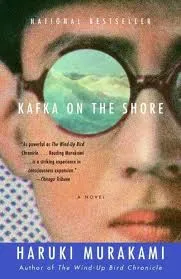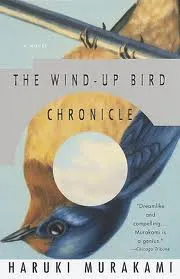
Reading Pathways: Haruki Murakami
Reading Pathways is a regular Book Riot feature in which we suggest a three-book reading sequence for becoming acquainted with certain authors. Check out previous entries on Toni Morrison, Charles Dickens, and John Steinbeck.
If you have an author you’d like us to feature here, write us at commmunity (at) bookriot (dot) com.
__________________________
Today’s arrival of 1Q84 has a lot of Murakami newbies curious and wondering where to start. 1Q84 not only has a cryptic title, but it puts the magnum in magnum opus, running almost 1000 pages. Clearly, this is a tall mountain to climb if you’ve never read Murakami, but it’s actually a pretty short hike to 1Q84 from the more scalable of his works. So if you want a good Murakami primer or a crash-course to get to 1Q84, here’s what I recommend:
Though it was available in English several years after The Wind-Up Bird Chronicle, Norwegian Wood really came first, both chronologically and structurally. Norwegian Wood has many of Murakami’s thorough-going concerns (memory, displacement, sex, cultural reference) without the narrative pretzeling of the later work. If the tone and ideas of this one aren’t to your liking, I wouldn’t suggest going any further. If you like this, though, I would proceed. (Note: lots of sex here. Lots. There’s sex in the following novels, but not to this extent.)
The temptation will be to jump to his breakout (at least in the English-speaking world) The Wind-Up Bird Chronicle, but Kafka on the Shore is a better bridge from Norwegian Wood as it ratchets up the weirdness considerably, but the weirdness is limited to two storylines, which makes it a bit easier to follow than TWUBC, and it doesn’t wander too far from narrative prose. There are the dreams, other worlds, mysterious memories, and enigmas that mark Murakami’s high period, but in the end I think it comes together in a more coherent, comprehensible way than some of the others. This is good, because if you want to proceed, any semblance of certainty and continuity is going to go bye-bye
Here is Murakami in full feather: Western literary references, intertwining narratives, consciousness-bending temporal overlaps, wildly imaginative characters and scenes, recurrent appearance of cats, alienated protagonists. This is Murakami’s signal work and one of the challenges for Murakami in 1Q84 is to somehow move past the stunning creativity, playfulness, and gravitas of this masterwork. Don’t expect to feel like you get it (that’s not the point, this isn’t readily SparkNotable literature), but do expect to feel. That lightheadedness you’re feeling, it’s right where you’re supposed to be.










